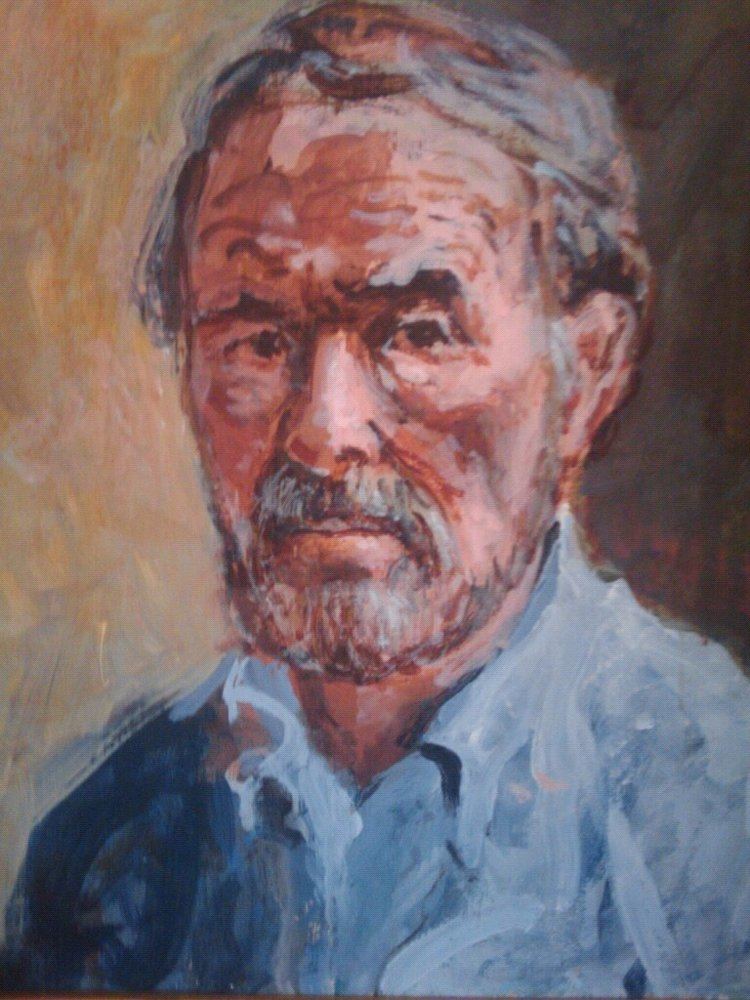Full Name Rudolf Bass Died January 6, 2011 Nationality Austrian-American | Name Rudi Bass Awards Emmy Award Role Artist Known for Graphic design | |
 | ||
Books How to Talk to a French Crocodile | ||
Rudolf "Rudi" Bass (May 22, 1914 – January 6, 2011) was a graphic artist, illustrator, and writer. Bass was the art director of the Graphic Arts Department of CBS News during the 1960s, during which time he pioneered the production of a legible typography. He worked in many aspects of print media including posters, books, magazines, before, during and after his work with television, and was the recipient of an EMMY award.
Contents

Early life (1914–1938)
Born in Vienna, Austria, Rudi (named Rudolf at birth) was the only child of Friedrich Bass and Auguste Erlich Bass. His father was the chief engineer (Oberingenieur) in Vienna for the railroad, an inventor, and an accomplished pianist; his mother was artistically inclined and an early feminist. He attended Realgymnasium 1 in the Stubenring in Vienna in 1929, where he was immersed in a classical education including languages and math. Upon graduation, Bass was admitted to the Kunstgewerbeschule, now known as The University of Applied Arts, Vienna.
With the help of his American uncle, John Bass, whom he joined when he arrived in New York City, Bass emigrated to the United States in the summer of 1938, for political reasons, having twice been imprisoned for distributing leaflets together with other activists against fascism which had already overtaken Austria, but before Kristallnacht, which occurred in November 1938. Bass was hired by Esquire two weeks after entering the U.S.A. Bass continued working at Esquire until his entry into the U.S. Army in 1943. Bass served during World War II until 1946, during which time he became a U.S. Citizen. Bass’ proclivity in writing extended to poetry as well, and a poem of his entitled, The Heroes was published in "The Best from Yank Army Weekly" (selected by the editors of Yank, published by E. P. Dutton & Co., Inc., New York 1945 p. 153).
Creative life
Later, he was an art director in the New York Times Promotion Department, followed by employment with McCann Erickson, BBDO, and Columbia Records. In television, he was the first, and to date, the only Director of Graphic Arts for CBS.
While at CBS, he inspired the creation of the Vidifont, the first electronic graphics generator employed in television production. The first font offered by the Vidifont was the CND-36 (CBS News Division) font that Rudi designed for CBS News. Rudi worked with the lead engineer who designed the Vidifont teaching him the basics of graphics design so that he would understand the nuances of the problem he was trying to solve. Within a year of its introduction, the system was widely adopted by the industry. CBS received an EMMY award in recognition of the Vidifont’s impact on television production.
In addition, while at CBS, Bass was Director of Graphic Arts for the televised coverage of “Man on the Moon: The Epic Journey of Apollo 11,” July – September 1969.
During his career in the United States, Rudi Bass won several awards, at least 14 in all, including: an Emmy from the National Academy of Television Arts & Sciences; 3 Best of Industry awards from The Direct Mail Association of America (DMAA), predecessor of the present-day Direct Marketing Association; an award for Excellence in Typography from the Art Directors Club (1951) and others from the American Institute of Graphic Arts (AIGA), where his work can be found in their design archives.
Additionally, he was a visiting professor at Yale University's School of Art, Graphics Department (1969–1971), the Rhode Island School of Design, and the Philadelphia College of Art.
Later life
At age 72, in 1986, he and his wife moved to Paris, France, where he began to write and draw as a free-lance artist. Two published works from this period are How to Talk to a French Crocodile and Comment Parler au Crocodile Americaine.
Bass gifted his design and installation of the war memorial stone plaques in the Cloister area and the design of the wrought iron alms bowl in the entry of the American Cathedral in Paris.
From March 26 to April 21, 2002, he had a one-man show at The National Arts Club in NYC The National Arts Club in New York entitled "How We Got Where We Are: 42 Portraits and Stories by Rudi Bass of marriages and murders, myth and reality of the rights of women and the rites of men." These are portraits with calligraphic text depicting historical figures with a brief bio of each. He primarily used acrylics for the paintings and India ink for the calligraphy. This body of work had two additional showings in different venues and were very well received in their entirety both for their beauty and their interesting and educational data in the text.
During all their years in France and continuing in his studio at home in New York City until shortly before his death, Rudi continued his prolific creative life turning out books, other art work and more (see Published works). He painted, sketched, wrote, designed and created daily and was an inspiration for many much younger than he.
At the time of his death, at the age 96, he was working on a project creating a new alphabet to enhance texting on smartphones.
An oral history of his life was recorded by the Leo Baeck Institute in New York shortly before his death, and they have spoken for his work and manuscripts for their library.
